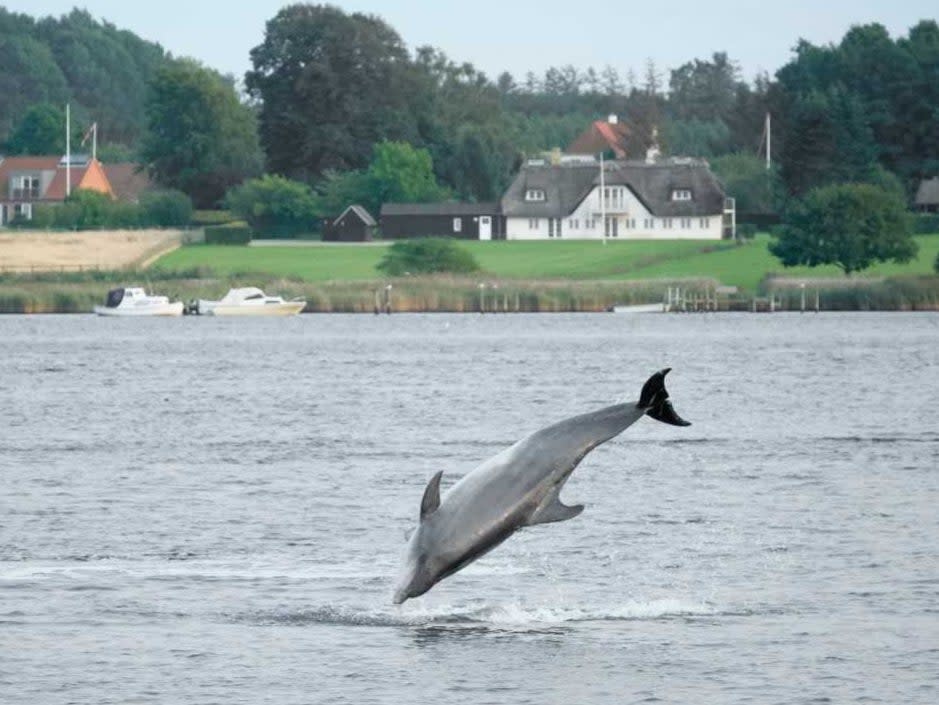'Incredible’: Scottish bottlenose dolphin ‘Yoda’ seen off coast of Denmark

A young male dolphin known as “Yoda”, from Scotland’s Moray Firth - the vast bay in northeast Scotland which stretches to Inverness - has surprised marine conservationists after it was spotted off the coast of Denmark.
The bottlenose dolphin was believed to be dead, after it had not been seen since 2017, butit has now been positively identified in the Svendborg area of Denmark, on the south east of the country, more than 700 miles from its home ground.
Conservationists in Denmark spotted the lone dolphin and gave it the name Delle, before it was later identified as one of the Moray Firth dolphins.
According to the charity Marine Connection, Yoda is about 13 years old, which means it is still fairly young.
Bottlenose dolphins can live for more than 40 years, with some females known to have survived for more than 60 years in rare cases.
Lone dolphins are not especially rare, and the numbers of cetaceans observed living solitary lives is increasing.
Liz Sandeman, co-founder of Marine Connection, told The Independent: “I’ve been working with colleagues in Denmark over the last 15 months, keeping up to date with how the dolphin is, because when solitary dolphins appear, over a few months they start becoming habituated [to humans]. So I wanted to check the dolphin was protected. But the locals are quite good around the dolphin.
“It’s quite incredible - he’s travelled over 700 miles from the Moray Firth. The last time he was sighted was round about 2017, and he seems to be doing quite well. He’s eating well. The Moray Firth dolphins are one of the largest bottlenose dolphins in the world. So he’s obviously eating well and seems to be quite healthy. Will he ever return? Who knows.”
She added: “We have quite a few of the Moray Firth dolphins spread out. There’s one at the Isle of Man at the moment, a couple of years ago quite a few of them were sighted on the Irish coast, quite a few of them at the moment are down in Yorkshire.”
In a statement the charity said: “For many years Marine Connection has been monitoring the phenomenon of solitary cetaceans worldwide and since November 2019, have been networking with colleagues in the Svendborg area of Denmark, with regards to a solitary male bottlenose dolphin which was given the name Delle.
“We have just been given the incredible news that Delle has been identified as one of the Scottish Moray Firth dolphins, known as Yoda, approximately 13 years old.
“Will this young male return to his home ground? It will be most interesting to watch his movements over the coming months and we will update with any further, exciting information.”
Yoda’s family group are all named after Star Wars characters: its mother is known as Chewbacca and its sister is called Kenobi.
According to the Press & Journal, researcher Barbara Cheney at Aberdeen University was among the team who helped positively link the animal to the Scottish population of dolphins.
Pictures of its fin were compared against a database of other images of fins which is used to identify dolphins in a similar way to how fingerprints can identify individual people.
Speaking to Danish newspaper FAA.DK, Dr Cheney said: “There is no doubt. Yoda now lives in Denmark. When he disappeared in 2017, I was looking for him with my Scottish colleagues, but no one had seen him.
“Some dolphins from the Moray Firth family were later spotted in Holland, but when I got the pictures ... I was in no doubt. It was something of a surprise because I actually thought Yoda was dead.”
Bottlenose dolphins can leap from the water to reach heights of 6 metres (20 feet) in the air.
Read more
Dolphin named Mystique surprises visitors with ‘treasure’ from ocean
Dolphin murder mystery prompts £42,000 reward offer

 Yahoo News
Yahoo News 
